Located just outside the Old Town, the Kunsthaus is filled with art from around the world and through the decades. To me, the most fascinating part of the museum was the collection of the Swiss painters (the first six photos in this post).
Also, if you’re on a budget, the Kunsthaus Collection has free entry on Wednesdays.
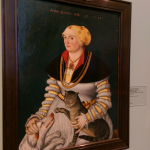
Painted by Hans Asper in 1538, Cleophea Holzhalb is a portrait of a noble woman. The headscarf means that she's married while the rings mean that she's rich. Asper was the last Holbein pupil before the reformation.
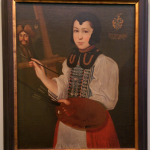
Anna Waser is the first known female painter. She paintied the self-portrait at the age of twelve. At 21, she became a court painter of a German count. While being a female painter at her time is highly abnormal, her father supported her talent. Anna returned home when she heard that her mother was sick and, at 36, fell down the stairs to her death.
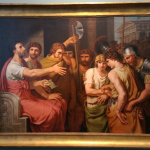
Johann Heinrich Wilhelm Tischbein painted the scene where Brutus condems his sons to death because of their involvement in a conspiracy. Tischbein is obssessed with ancient Rome and devotes his life to painting historical scenes. Here, Valerius (cloacked) discovered the conspiracy that led Brutus to condemn his sons to death. The painting shows Brutus' utmost belief in the equality of people before the law.
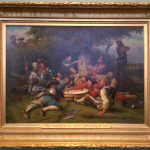
In his painting, The Milk Soup at Kappel, Albert Anker attempts to create a history painting for the literary project, Swiss history in pictures. The subject of the painting is the peaceful resolution of Switzerland’s first religious war, started in 1529 during the Reformation. It is said that the Catholic mountain folk provided the milk for the meal while the Protestant farmers provided the bread. In this painting, the soldiers from the two sides have laid down their armor and share a meal while they try to peacefully resolve the conflict.
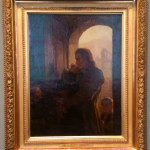
Heinrich Pestalozzi was a famous philanthropist in 1798 during the Swiss occupation by the French revolutionary armies. Painted in 1870 by Albert Anker, Heinrich Pestalozzi and Orphan Children in Stans was an obvious allusion to current political events. Because of the Franco-Prussian War, neighboring populations required humanitarian aid. In 1864, the Red Cross was founded in Geneva. It was the perfect example of Switzerland’s humanitarian responsibility and, understandably, part of the reason for Anker’s call to action.
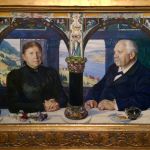
Albert Welti was the eldest of six, born in an upper middle-class family. He father had inherited and expanded his own father’s horse and coach business and disapproved of Albert Welti’s desire to paint. His father asked Arnold Böcklin to assess Albert Welti’s skills. Böcklin liked Albert Welti’s style so much that he took him on as his pupil for two years. In 1899, Albert Welti painted his parents, Albert and Barbara, when he was already a distinguished Swiss painter. Both figures are united by Lake Zurich in the background while also clearly separated by the arches in the foreground. Each of the figures have gender specific objects in front of them. The father’s letter, under the tobacco bowl, carries the date and signature of this painting.
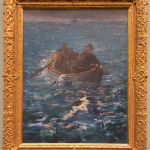
While Edouard Manet never took part in impressionist salons, he is largely considered the father of impressionism because of his inventive brushstrokes. The sketched in shipmates in Manet's, Henri Rocheforts Flucht (1881), clearly contrast with the classical attention to detail. The painting was intended to be a political painting but failed at the traditional salons. Nonetheless, the style of this painting is very important for future impressionists.
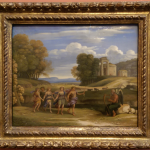
In Claude Lorraine's painting The Dance of the Seasons (1662), the four seasons are depicted as four girls with wreaths. The winter girl holds on to the spring's blue scarf. This highlights the recurrence of events (and, to me, the circle of life). The figures are separated from the rest of the scene by a dark green meadow, as if they were on a stage. The ruins in the background and the waterfall symbolize the passing of time. Apollo, the god of sun and music, leads them to Cronus, the father of time. Lorraine painted this scene without securing a commission because he didn't want the pressures that came with it. He simply wanted to express himself. The painting was willed to Lorraine's nephew, who lived with the painter during the second half of his life.
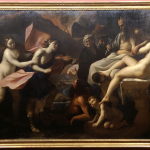
Mattie Preti draws Orpheus trying to save his love, Eurydice, from the underworld through his music. Orpheus' music doesn't just calm the three-headed hell hound but also intrigues Pluto (the ruler of the underworld) as well as Dante and Virgil (the two poets of hell). In this painting, Preti shows that only music inspired by love can end eternal suffering.
Thanks to the excellent guide